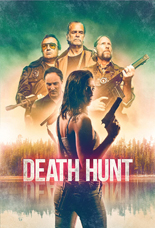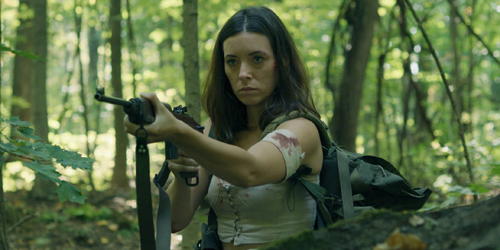
 Having worked on both sides of the camera for H.B. Halicki’s pioneering hicksploitation indie, 1974’s Gone in 60 Seconds, perhaps Jack Vacek thought he could do that, too. And he did, editing, producing, writing, directing, stunting and starring as Smokey in Double Nickels (as in 55, which some can’t drive, but you got that).
Having worked on both sides of the camera for H.B. Halicki’s pioneering hicksploitation indie, 1974’s Gone in 60 Seconds, perhaps Jack Vacek thought he could do that, too. And he did, editing, producing, writing, directing, stunting and starring as Smokey in Double Nickels (as in 55, which some can’t drive, but you got that).
Smokey and partner Ed (Edward Abrahms, also of 60 Seconds) work as California highway patrolmen. For a while, Double Nickels plays aimlessly, like a slice-of-life account of their day as they pluck ukeleles, play pinball and pursue a speeding motorcycle, dune buggy and truck — the latter straight through a watermelon stand. Then one traffic stop yields a unique opportunity that changes the movie’s course: a side hustle of repossessing cars. Smokey and Ed sign up, leading to more scenes of someone saying, “That’s my car!” than the silver screen has ever witnessed.

What they realize too late is the job isn’t what it’s cracked up to be, legally speaking; they’ve been working for a criminal enterprise! Cue the big chase finale, as Smokey tears through a swap meet, a fireworks stand, a public park and, presumably post-credits, his best girl’s tube top. (Patrice Schubert, aka Mrs. Vacek, plays said best girl.)
From today’s perspective, Vacek exudes big Dax Shepard energy and likability — and looks similar, too, which is extra-ironic, given that the comedian would be behind the wheel of his own star vehicles (literally) some 35 to 40 years later with Hit & Run and CHiPs. As such, Double Nickels coasts on a laid-back, we’re-all-family vibe, even in pulse-quickening, stunt-heavy action sequences that appear to put extras closer to real danger than union shoots would allow. When you have that in surplus, being light on plot matters not.
On the funometer, Double Nickels easily clears 85. Make some “vroom” in your viewing schedule. —Rod Lott





 In a high-profile kidnapping case that crosses international borders, whom would you trust for a rescue mission?
In a high-profile kidnapping case that crosses international borders, whom would you trust for a rescue mission?
 Joining the crew are an explosives expert (a pre-typecast Christopher Lloyd in a cowboy hat), a weapons specialist (Olympic gold medalist Bob Seagren), a kung-fu bartender (Soon-Tek Oh,
Joining the crew are an explosives expert (a pre-typecast Christopher Lloyd in a cowboy hat), a weapons specialist (Olympic gold medalist Bob Seagren), a kung-fu bartender (Soon-Tek Oh, 
